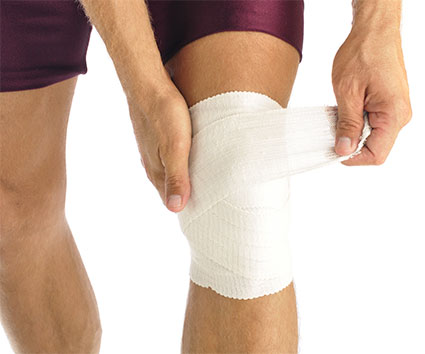Post-Op Highlight: Using H-Wave After Orthopedic Surgery | Kelly Starrett, DPT
Three reasons why Kelly Starrett always reaches for H-Wave for his orthopedic surgery patients
Kelly Starrett, DPT reviews why he and his team have been utilizing H-Wave for his post-op patients after orthopedic surgery for over a decade. In this video he highlights some of the benefits that H‑Wave can provide orthopedic surgery patients to help them control pain and recover faster in order to have better surgical outcomes.
1 – Controlling Pain After Orthopedic Surgery
H-Wave is unique in the fact that it has more than one setting which can help with pain management. The high frequency setting provides on-demand pain relief by targeting the nerves and shutting down the pain signals. This creates an analgesic effect that can be felt long after the high frequency treatment is done. The low frequency setting on the H-Wave is rehabilitative but can also be very effective with pain control. By flushing waste out of the affected area or limb and reducing congestion, this provides an additional reduction in pain because less congestion equals less pain.
Additionally, the low frequency setting is highly beneficial because it can be used for long periods of time without fatiguing the tissues. Patients can get 20-24 hours of consistent, comfortable decongestion both locally and/or regionally around the affected area, which normally would be hard to achieve with post-surgical swelling. Less congestion means less pain, so patients can get earlier mobilization which reduces the fear response to movement that usually happens after injury, trauma, or surgery. Less pain overall also means fewer pain medications are needed right from the start of recovery immediately after orthopedic surgery.
2 – Early Mobilization Post Surgery
As noted above, the sooner patients can start safely moving and appropriately loading the tissues after orthopedic surgery, the better their overall surgical outcomes can be. By loading the tissues early-on, patients can avoid severe congestion build up, reduce fear-guarding to movement, have better blood flow to the affected local site as well as system-wide; all of which equates to a more effective recovery process both immediately after orthopedic surgery as well as the long-term recovery post-op.
3 – Maintaining Neuromuscular Connection
Lastly, patients can experience an increase in neuromuscular return by maintaining the connection between the affected limb and the brain through the early mobilization and consistent decongestion. With H-Wave’s on-demand pain control as well as decongestive capabilities, patients are able to move sooner after orthopedic surgery and maintain “movement without motion” throughout their surgical recovery. This prevents the connection between brain and affected limb from being severed due to disuse atrophy.
Watch the full video here:
You may also like:
Post-Op Highlight: Using H-Wave After Spinal Surgery | Kelly Starrett, DPT
Improving Total Knee Replacement Recovery Time with Dr. Kelly Starrett
